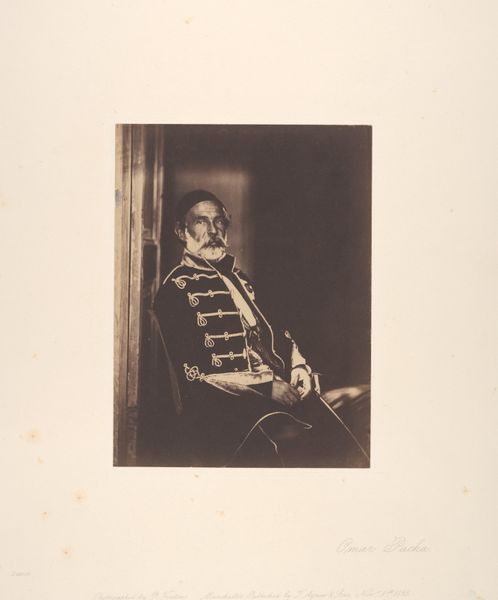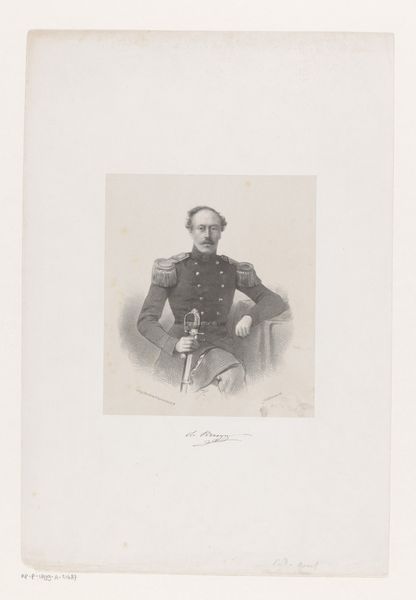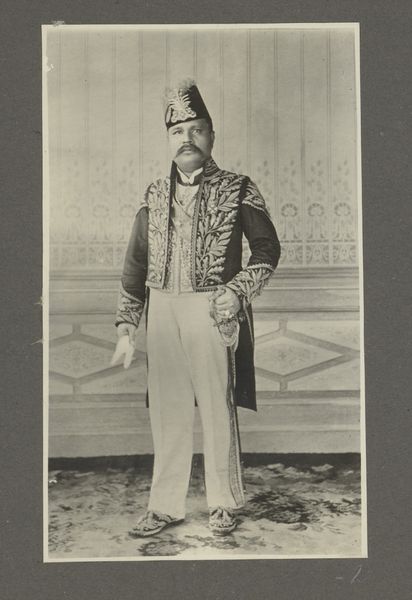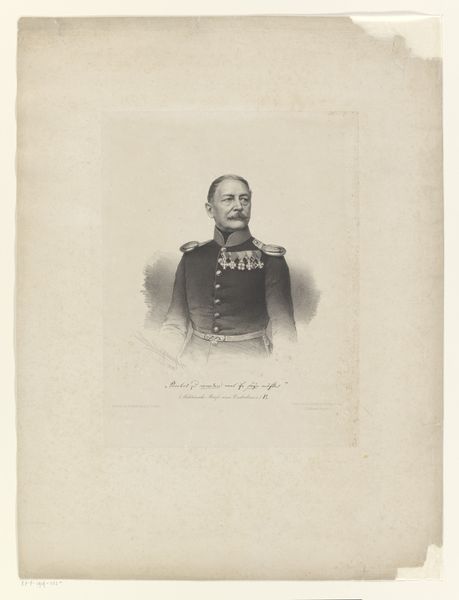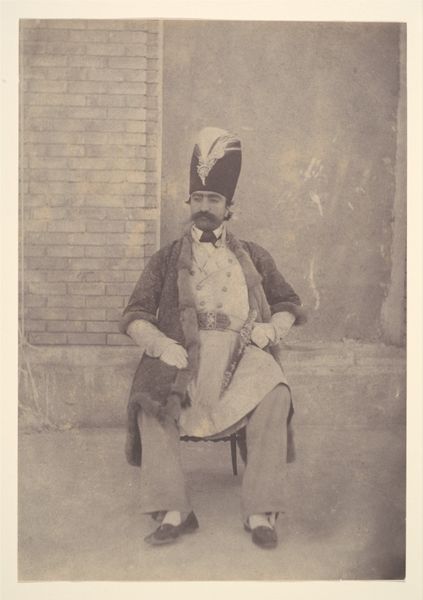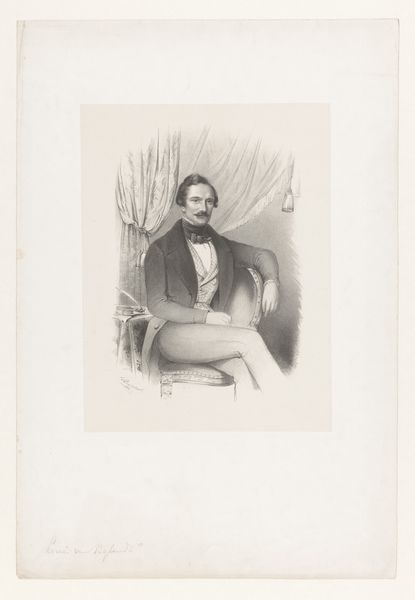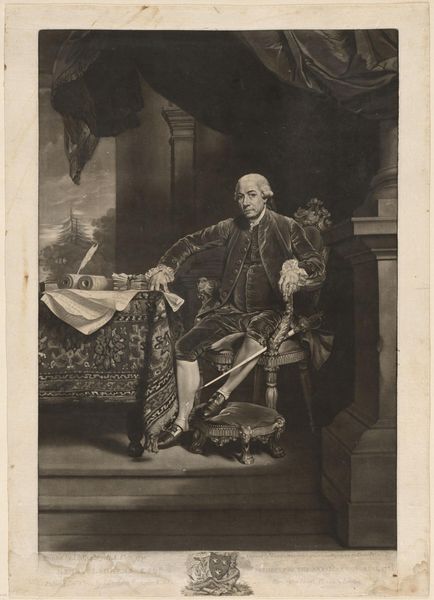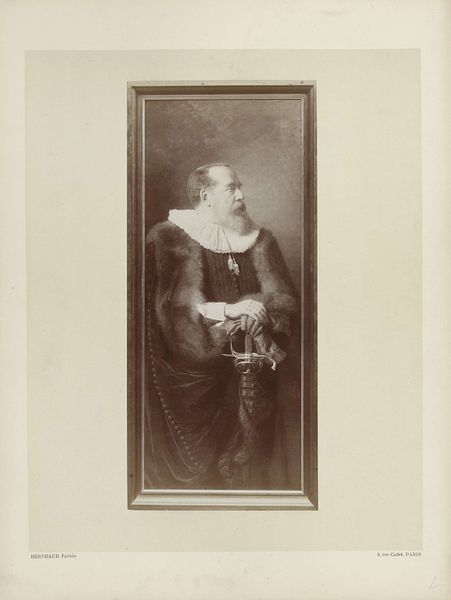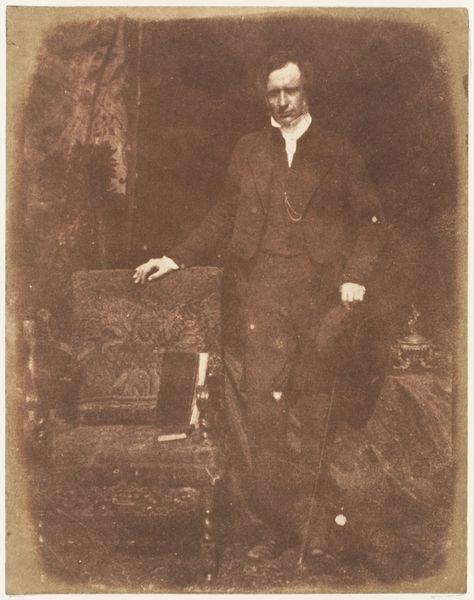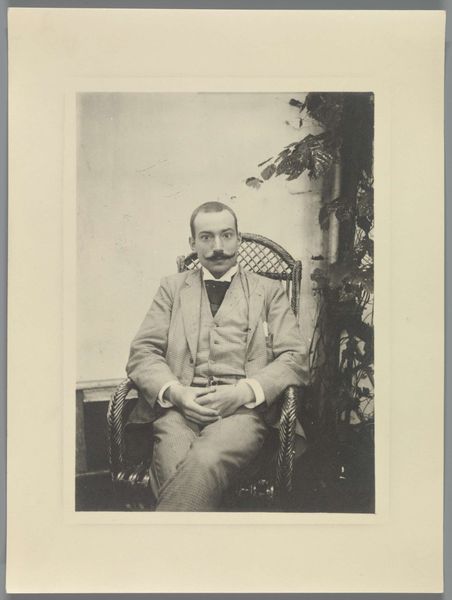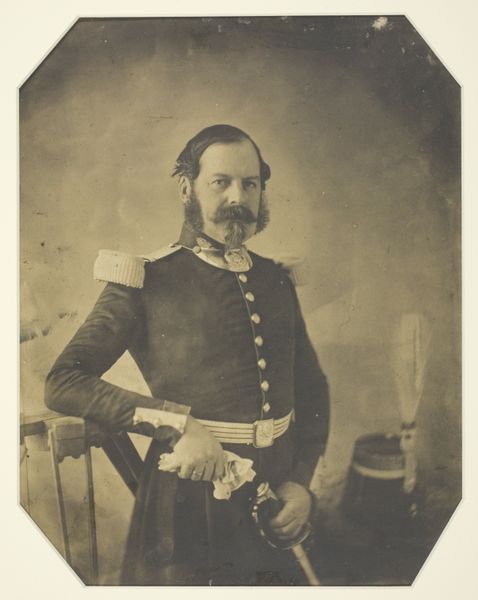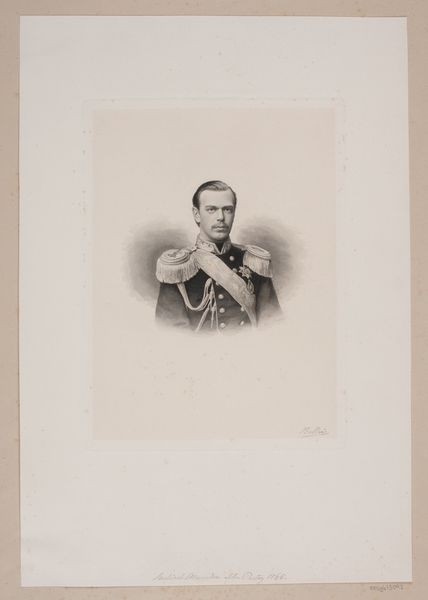
Dimensions: 20.1 × 14.5 cm (image/paper); 58.9 × 42.5 cm (mount)
Copyright: Public Domain
Curator: It has an undeniable somber quality. Is it the stark contrast, or the weight of the sitter's gaze? Editor: Today, we are looking at Roger Fenton’s portrait of "Omar Pacha", taken in 1855. Fenton, an English photographer, captured this image using the daguerreotype process, which produced a remarkably detailed print on paper. It resides at the Art Institute of Chicago. Curator: Pacha certainly seems a man of significance. The regalia practically shouts of military prowess, doesn’t it? The meticulously detailed frogging on his dolman, that imposing fez... all contribute to a carefully constructed image of power. But it seems more to do with creating power through the image, and distributing that in British society. Editor: Absolutely. Consider the timing and location. This image was made during the Crimean War. The Ottoman Empire was a key British ally and this image, alongside others that Fenton was making in this period, reinforced public perceptions of alliance and strength at a time of war. It is very much about cultivating that alliance at home through strategic visual representation. Curator: It's fascinating how Fenton manipulates the photographic medium to convey not just a likeness, but a political narrative. Did Fenton capture other Crimean War figures? Editor: Indeed. He photographed many British commanders and soldiers, sometimes amidst staged battlefield scenes. There were strict parameters on what Fenton was able to show in his pictures, so many of the harsh realities of the conflict, such as sickness and death, remained out of view. Curator: It truly demonstrates the power of photography not only to document but to shape public sentiment. Looking at the photograph itself, there is something both immediate and remote in this portrait. I notice the softness of focus that gives Omar Pacha's features an almost painterly quality. Editor: The pose, though seated, exudes command, it is undeniable, while simultaneously it creates a sense of Romantic heroism in its depiction of war and its leaders. These artistic techniques allowed the photograph to be readily appreciated at the time. Curator: This photograph becomes far more than a portrait. It transforms into a complex statement about the era and a war being carefully crafted in the public imagination. Editor: Precisely. Fenton's "Omar Pacha" serves as a testament to the intersections of art, politics, and cultural narrative.
Comments
No comments
Be the first to comment and join the conversation on the ultimate creative platform.
